Harrell convenes thought-leaders to catalyze new research
informed by science, humanities and arts disciplines
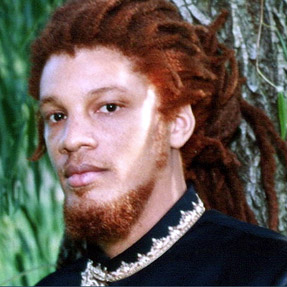
Fox Harrell brings together 55 thought leaders
to explore the goal of using technology to better
understand society — and using the humanities
and arts to build creative computational systems.
Research informed by humanities, arts, and science disciplines
Bringing together the resources of the National Science Foundation (NSF) and the National Endowment for the Arts (NEA) is no easy task, but newly appointed Associate Professor D. Fox Harrell recently succeeded in leading a joint workshop focused on supporting research informed by both arts and science disciplines.
The well-attended gathering was titled Re/Search: Art, Science, and Information Technology | A Joint Meeting of the National Science Foundation and National Endowment for the Arts.
“The two national agencies involved are usually seen as being at opposite ends of the spectrum in terms of aims and approaches—not to mention how they evaluate effective work,” said MIT Associate Professor Nick Montfort of Writing and Humanistic Studies (WHS), who attended. “The workshop aimed to align and reconcile their goals for art/science work using information technology.”
A first at MIT
“I think the time is ripe for them to come together,” said Harrell, who is MIT’s first professor to hold both an appointment in the School of Humanities, Arts, and Social Sciences, and to serve as a principal investigator in the Computer Science and Artificial Intelligence Laboratory (CSAIL).
The workshop, held September 15-16, 2010, in Arlington, Virginia, was “a major step toward recognizing the cultural importance of computing and the worth of developing projects with artistic as well as scientific dimensions,” Montfort said.
Thought leaders gather to foster creative research
The goal, according to Harrell, was to facilitate “using technology to better understand society—and using the arts and humanities to build creative computational systems."
The event gathered 55 thought leaders — artists, social scientists, and computing researchers — to discuss such topics as hybrid methods in art/science/information technology research, barriers to successful collaboration across disciplines, and how to foster creativity-based technology research. “We had a very focused and structured agenda,” said Harrell, who received an NSF grant to conduct the workshop.
The vanguard of science/art/humanities/engineering collaborations
Attendees included leaders from the NSF and NEA, deans of arts programs, professors of computer science, nonprofit leaders, independent artists, and others interested in digital media and new forms of expression. “Key to the success of the workshop was the involvement of participants in leadership positions, influencers who represent the vanguard of art/science/engineering collaborations in the United States and the international research arena,” Harrell said.

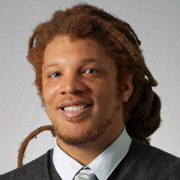
"Humanistic research embodies an immense wisdom
about subjective aspects of the human condition that
designers could tap to build computational systems.
We’re at a point where it makes sense to ask humanistic
questions about how the computer conveys culture."
— Fox Harrell
MIT can be a leader in the area
“[The workshop] not only opens up opportunities nationally. MIT can be a leader in this area,” Harrell said. “There are already people here doing work across disciplines and boundaries. We just need to make it more visible and unified.”
Harrell, who has a Ph.D. in Computer Science and Cognitive Science from the University of California, San Diego, runs the Imagination, Computation, and Expression Laboratory (ICE Lab) at MIT, which focuses on the invention of forms of interactive narrative, games, social networking, and related cultural-computational media using cognitive science and artificial intelligence-based techniques. Whereas computing has historically been focused on utilitarian aims, Harrell’s work also has subjective aims.
Bringing humanities/arts intelligence to engineering science
“Game developers may benefit from dialogue with traditions of thinking in the humanities, for example understanding the nature of storytelling across cultures can result in richer forms of narrative in games,” said Harrell, who also holds a master’s degree in Interactive Telecommunications from New York University as well as a B.F.A. in Art and a B.S. in Logic and Computation from Carnegie Mellon University. But technology is now sophisticated enough that characters in games can become more realistic—developing in response to the players’ choices, for example, he said.
Asking humanistic questions about the computer as culture-conveyer
“Humanistic research embodies an immense wisdom about subjective aspects of the human condition that designers could tap to build computational systems," he said. For example, becoming a member of a group is much easier online than it is in real life. “What can software learn from what we do well in the real world?” and reciprocally, “how can systems we build help us understand humans better,” Harrell asked.
“We’re at a point where it makes sense to ask humanistic questions” about how the computer conveys culture, he said.
Montfort, who writes computational and constrained poetry, develops computer games, and is a critic, theorist, and scholar of computational art and media, agrees. “I am extremely pleased that there has been some recognition for my sort of creative practices and investigations,” he said.
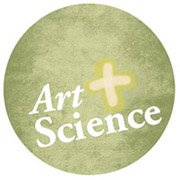
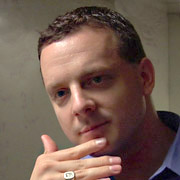
The workshop creates more momentum
"for work at the juncture of art and science
to be supported by the federal government."
— Nick Montfort
Methods, measuring, and best practices
Over two days, the workshop group discussed questions including what qualitative methods exist for measuring the success of technology-rich creative endeavors as well as ways to identify transformative, innovative, and/or emerging art practices that merit governmental support.
Funding is a key issue for those who work at the intersection of arts and sciences, Harrell said. “While there are many researcher/artists in this area...current national opportunities for major funding of projects are limited."
Cross-disciplinary fluency
“The workshop took up the goal of articulating shared vocabularies, methods, outcomes, collaborative practices, and criteria assessment/critical interpretation in a jointly defined set of areas of clear social value along cultural, aesthetic, and scientific dimensions,” he said.
In other words, “what does it mean to make an interdisciplinary team?” Harrell asked, noting that collaboration is critical to bridging gaps in expertise. “We want to respect deep knowledge in existing fields”—but artists/humanists should understand basic computational processes—and computer scientists need some baseline understanding of the humanities, he said.
“We should be comfortable being amateurs in other areas—[that] enables a sense of exploration,” he said. “Maybe [individuals] don’t have major expertise in both areas, but [they] have enough to communicate.”
Planning for concrete outcomes
The workshop considered the current state of collaboration, the desired state, and how to get there—but there were some skeptics at the outset, because past efforts to form collaborations that cross the NSF-NEA boundaries have failed to deliver results, Harrell said.
The difference this time, he said, was that he and his co-principal investigator, educational technology researcher Sneha Veeragoudar Harrell, planned for a series of concrete outcomes. Workshop attendees are creating an online web repository to share results; producing a white paper for broad dissemination in an academic journal; developing a new funding model involving nongovernmental organizations; and outlining interdisciplinary tenure requirements.
Harrell said he was impressed with how many attendees volunteered to participate in these follow-up projects. “A self-described naysayer at the beginning energetically and enthusiastic described how enriching, productive, and well-organized the workshop was by the end," he said.
“There is now more hope for work at the juncture of art and science to be supported by the federal government,” Montfort said. •
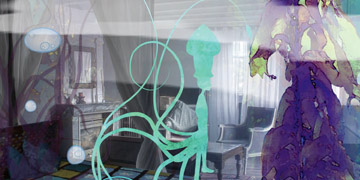
Fox Harrell
Fox Harrell is Associate Professor of Digital Media, joint in the Program in Writing and Humanistic Studies, Comparative Media Studies Program, and in the Computer Science and Artificial Intelligence Laboratory (CSAIL). His research explores the relationship between imaginative cognition, digital media arts, and computation, developing new forms of interactive narrative, gaming, social computing, and other types of culturally engaged AI-based media. Harrell received the National Science Foundation (NSF) CAREER Award for his project “Computing for Advanced Identity Representation.” He is currently completing a book, Phantasmal Media: An Approach to Imagination, Computation, and Expression, for the MIT Press.
Nick Montfort
Nick Montfort is Associate Professor of Digital Media in the Program in Writing and Humanistic Studies. He is a creator, critic, and theorist of digital media particularly focused on the intersection of computing and writing practice. He is an author and programmer of interactive fiction, poetry generators, and other digital literary systems. He blogs about digital media and other topics, writes poems in unusual forms, and frequently collaborates with writer/programmers and others on online literary projects.
Suggested Links
Podcast: Fox Harrell and the Imagination, Computation, and Expression Lab
Writing and Humanistic Studies Faculty
To learn more about Harrell's perspective on integrating art and computing:
"Toward a Theory of Phantasmal Media"
Reporter/Writer: Kathryn M. O’Neill
Editor/Art Director: Emily Hiestand
Multimedia images: from Harrell's "Loss, Undersea,"
an artificial intelligence-based interactive narrative